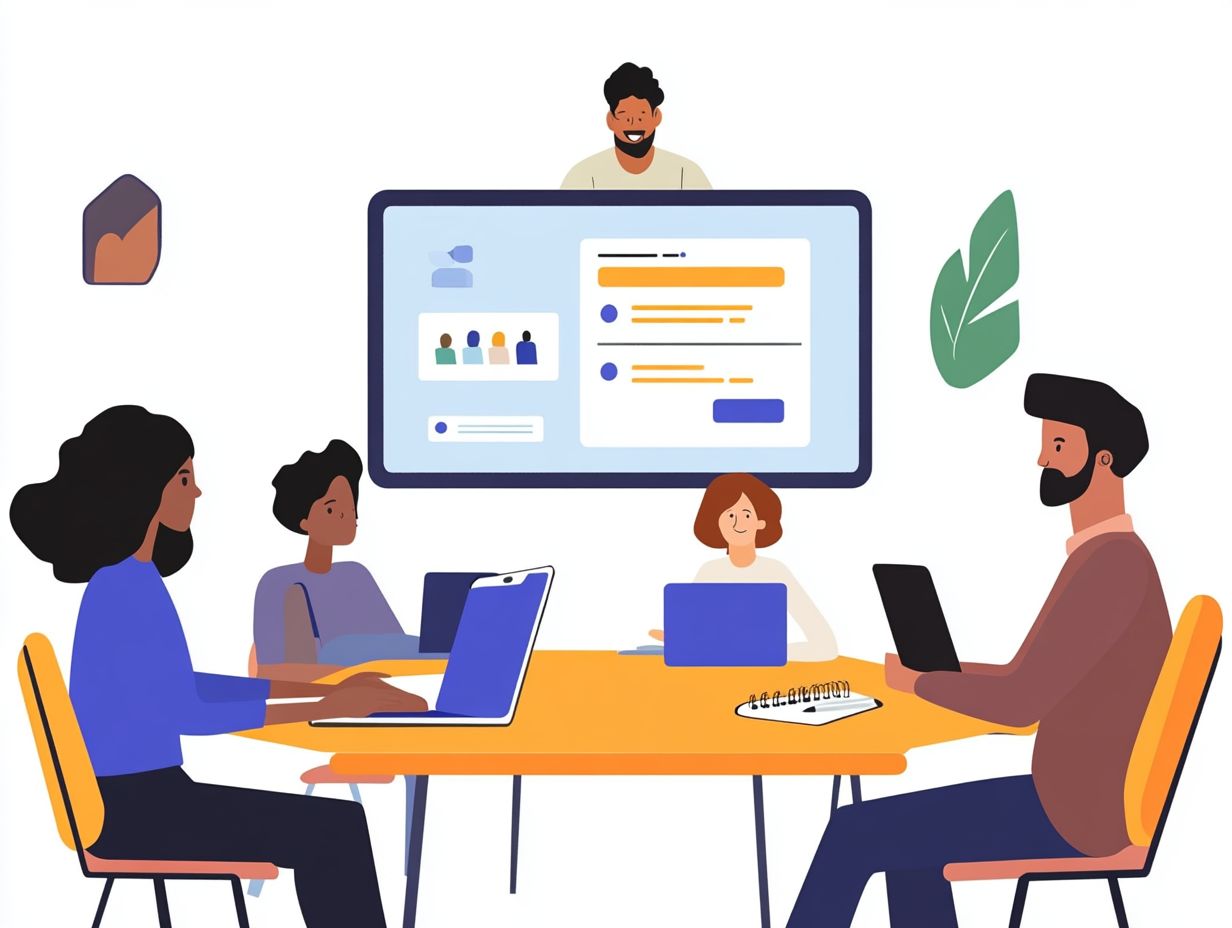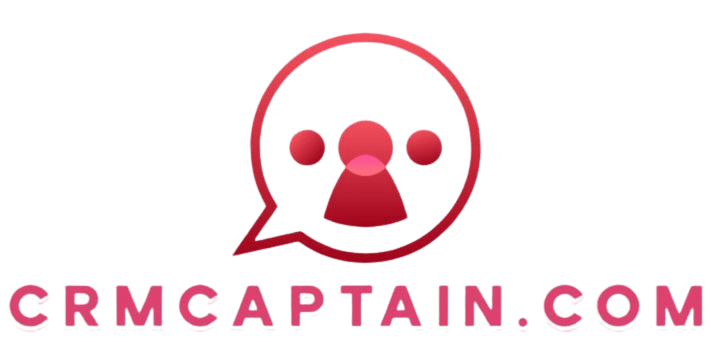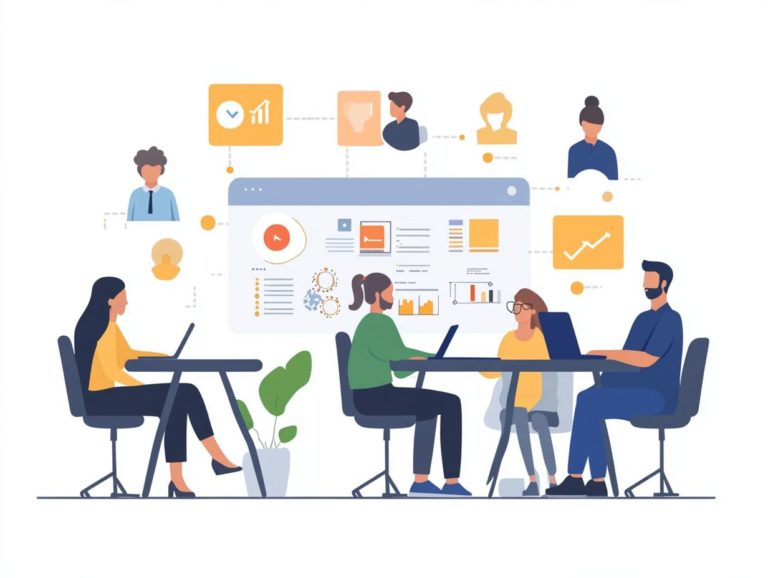How to Train Employees on New CRM Software
In today s fast-paced business landscape, mastering new CRM software is essential for enhancing both organizational effectiveness and employee satisfaction.
This article delves into the significance of training employees on these systems. It showcases the myriad benefits for the company as well as individual team members. You ll learn how to assess training needs, craft a tailored training plan, and implement effective techniques that resonate with your staff.
It also covers how to evaluate training success and tackle any challenges that may arise. This ensures continuous growth and proficiency within your team.
Explore the transformative power of strategic training and watch your workplace evolve!
Contents
- Key Takeaways:
- The Importance of Training Employees on New CRM Software
- Assessing Employee Training Needs
- Developing a Training Plan
- Implementing the Training Program
- Evaluating the Success of Employee Training
- Addressing Challenges and Concerns
- Continuing Education and Training for Ongoing Success
- Preguntas Frecuentes
- Qu es el software de CRM y por qu es importante capacitar a los empleados en su uso?
- Cu les son las caracter sticas clave del software de CRM en las que se deber a capacitar a los empleados?
- C mo deber an las empresas abordar la capacitaci n de sus empleados en el nuevo software de CRM?
- Cu les son algunos desaf os comunes que las empresas pueden enfrentar al capacitar a los empleados en el nuevo software de CRM?
- C mo pueden las empresas asegurarse de que los empleados est n capacitados eficazmente en el nuevo software de CRM?
- Cu les son algunas de las mejores pr cticas para capacitar a los empleados en el nuevo software de CRM?
Key Takeaways:

- Proper training on new CRM software boosts efficiency and satisfaction.
- Assess employee needs to identify gaps before creating a training plan.
- Use diverse techniques and tools for effective training implementation.
- Measure success through evaluations of learning and performance.
The Importance of Training Employees on New CRM Software
Training your employees on new CRM software is essential for elevating customer relationship management. To achieve this effectively, consider exploring how to train your team on CRM best practices. It also fosters employee engagement and propels business growth.
As CRM solutions like Nutshell, Salesforce, and HubSpot continue to evolve rapidly, it s crucial to ensure that your team possesses the skills necessary to leverage these powerful tools effectively.
Thoughtful training not only streamlines the onboarding process for new hires but also nurtures a culture of continuous learning and adaptability within your organization.
Benefits for the Company and Employees
Implementing effective employee training on CRM software presents a wealth of benefits for you and your organization, especially when considering how to transition to a new CRM system.
By enhancing your team’s skill set, you pave the way for improved customer satisfaction. Your staff will be able to navigate the system with ease and offer personalized support.
Enhanced employee engagement is another key advantage. Your workers will feel more confident and enabled in their roles.
When your sales and marketing teams receive comprehensive training, they can leverage CRM tools to identify customer trends, track interactions, and tailor their strategies accordingly.
This proactive approach can lead to impressive performance metrics. Expect increased sales conversions and refined lead management as your team members utilize their expertise to drive your strategic goals forward.
Assessing Employee Training Needs
Assessing employee training needs stands as a pivotal first step in the training process. This approach ensures that both new hires and current staff receive customized support designed to bridge their specific knowledge gaps.
Evaluating Current Skill Levels and Knowledge Gaps
To effectively check your team s current skills and identify knowledge gaps, it’s essential to implement a structured assessment process within your employee training initiatives.
This approach not only pinpoints areas that need improvement but also cultivates a culture of continuous learning.
By utilizing a blend of surveys that gather employee feedback on their perceived skills and formal tests that assess knowledge in specific areas, you can gain a comprehensive understanding of your workforce’s capabilities.
Regular performance reviews will also serve as an effective means of tracking progress over time.
Together, these assessment techniques ensure that your training programs remain relevant and dynamically address skill deficiencies as they arise. This reinforces the critical role of ongoing evaluation in employee development.
Developing a Training Plan

Creating a comprehensive training plan is crucial for articulating clear objectives. It outlines the onboarding process for new employees and ensures that all training materials align seamlessly with your organizational goals.
This strategic approach enhances the effectiveness of your training initiatives and fosters a cohesive environment where every new team member can thrive.
Don t wait! Equip your team with the skills they need to succeed now.
Identifying Training Objectives and Methods
Identifying clear training objectives and methods is essential for crafting an employee training program that effectively addresses the needs of both your organization and its workforce.
By adopting a comprehensive approach that incorporates a variety of training techniques, such as interactive sessions to boost engagement and gamification to make learning enjoyable, you can create a truly impactful educational experience.
Well-organized materials tailored to different learning styles are also crucial. It s vital that these programs closely align with the specific roles and responsibilities of your employees. This alignment enhances information retention and illustrates how the training connects to their daily tasks and professional development.
Implementing the Training Program
To implement the training program effectively, engage in meticulous planning and coordination.
Ensure that each training session captivates participants and is supported by a responsive team that provides ongoing assistance to enhance the learning experience.
Effective Training Techniques and Tools
Utilizing effective training techniques and tools can dramatically enhance your learning experience and boost knowledge retention during CRM training.
Training specific to your job lets you engage with content tailored to your role. This ensures what you learn is relevant and immediately applicable.
Incorporating collaboration tools creates a team-oriented learning atmosphere. Here, you can share insights and strategies related to data analysis and sales automation.
Through interactive discussions and practical exercises, you ll become increasingly adept at leveraging these valuable tools in real-world scenarios.
This approach boosts your skills and drives your team’s success, paving the way for greater CRM implementation achievements.
Evaluating the Success of Employee Training
Evaluating the success of employee training programs is crucial for assessing their effectiveness against established training objectives and performance metrics.
This process allows you to measure how well programs are meeting their intended goals and contributing to overall organizational success.
Measuring Employee Learning and Performance

Measuring employee learning and performance provides invaluable insights into the effectiveness of your training initiatives and helps shape future enhancements.
By utilizing techniques such as assessments, surveys, and observations, you can better understand how well skills and knowledge are being absorbed within your organization.
Incorporating feedback mechanisms, like regular performance reviews and peer evaluations, fosters a culture of continuous improvement. These feedback loops identify areas for growth and create an environment where employees feel eager to learn and adapt.
Collectively, these strategies allow you to tailor future training programs to align with the evolving needs of both your workforce and the organization.
Addressing Challenges and Concerns
Addressing challenges and concerns during the training process is essential for maintaining employee morale and facilitating a seamless transition to the new CRM software. Implementing tips for successful user training in CRM can greatly enhance this experience.
Troubleshooting and Providing Support
Swift troubleshooting and support are crucial. They can turn your worries about new CRM updates into confidence!
To enhance this experience, consider implementing several support strategies tailored to your needs. For instance, developing a comprehensive knowledge base can be a valuable resource, allowing easy access to guidelines, FAQs, and troubleshooting tips.
Regular refresher courses can reinforce your learning and ensure you feel confident in utilizing new features.
Maintaining ongoing support channels, such as dedicated help desks or forums, enables you to ask questions and receive assistance in real-time. This fosters a more cohesive and informed team as you navigate these changes together.
Continuing Education and Training for Ongoing Success
Continuing education and training are vital for maintaining employee engagement. They ensure that your teams excel in utilizing customer relationship management (CRM) software while seamlessly adapting to updates.
Investing in ongoing development enhances proficiency. It creates an environment where people want to learn and improve within your organization.
Encouraging Continued Learning and Growth
Encouraging ongoing learning and growth among employees cultivates a culture of innovation and adaptability. You can achieve this through various strategies, such as establishing clear training goals that align with both personal development and organizational needs.
By providing opportunities for continuous education, employees can enhance their skills and feel enabled in their roles. Gathering feedback from participants about their learning experiences is essential; it allows you to continuously improve training programs.
Measuring how these educational initiatives impact performance metrics helps assess their effectiveness. This ensures that both employees and the organization reap the benefits of investing in learning and development.
Preguntas Frecuentes

Qu es el software de CRM y por qu es importante capacitar a los empleados en su uso?
El software de gesti n de relaciones con clientes (CRM) es una herramienta que ayuda a las empresas a gestionar sus interacciones y relaciones con los clientes. Permite a las compa as almacenar y analizar datos de clientes, rastrear ventas y mejorar el servicio al cliente.
Capacitar a los empleados sobre c mo usar el software de CRM es importante. Esto puede aumentar la productividad, mejorar la satisfacci n del cliente y, en ltima instancia, impulsar el crecimiento del negocio.
Cu les son las caracter sticas clave del software de CRM en las que se deber a capacitar a los empleados?
- Gesti n de contactos
- Seguimiento de clientes potenciales y oportunidades
- Previsi n de ventas
- Automatizaci n del marketing
- Servicio al cliente y soporte
- Anal tica y los informes
Estas caracter sticas son esenciales para que los empleados gestionen y utilicen eficazmente los datos de los clientes. Tambi n mejoran la comunicaci n y ayudan a tomar decisiones empresariales informadas.
C mo deber an las empresas abordar la capacitaci n de sus empleados en el nuevo software de CRM?
Es importante que las empresas tengan un plan de capacitaci n estructurado cuando introducen un nuevo software de CRM. Esto puede incluir sesiones de capacitaci n en persona, tutoriales en l nea y ejercicios pr cticos.
Contar con una persona o equipo designado que pueda proporcionar apoyo continuo tambi n es beneficioso. Ellos pueden responder cualquier pregunta que los empleados tengan durante el proceso de capacitaci n.
Cu les son algunos desaf os comunes que las empresas pueden enfrentar al capacitar a los empleados en el nuevo software de CRM?
Algunos desaf os comunes incluyen la resistencia al cambio y la falta de comprensi n o motivaci n. Para abordar estos desaf os, es importante comunicar la importancia y los beneficios del nuevo software.
Tambi n es esencial proporcionar capacitaci n y apoyo adecuados y ofrecer incentivos o recompensas por la adopci n y utilizaci n exitosa.
C mo pueden las empresas asegurarse de que los empleados est n capacitados eficazmente en el nuevo software de CRM?
Para asegurarse de que los empleados est n capacitados eficazmente, es importante tener un plan de seguimiento. Esto puede incluir proporcionar apoyo continuo y realizar evaluaciones regulares.
Recopilar comentarios de los empleados y realizar los ajustes necesarios en el programa de capacitaci n tambi n es beneficioso.
Cu les son algunas de las mejores pr cticas para capacitar a los empleados en el nuevo software de CRM?
Capacitar a los empleados en el nuevo software de CRM es esencial para el éxito. Comienza con lo básico y proporciona experiencia práctica, utilizando estrategias para involucrar a los usuarios durante la capacitación en CRM.
Ofrece diferentes m todos de capacitaci n para adaptar a los distintos estilos de aprendizaje. Establecer expectativas claras ayudar a que todos est n en la misma p gina.
Haz que la capacitaci n sea atractiva y relevante para cada rol. Tambi n es crucial ofrecer apoyo y recursos para facilitar la adopci n del nuevo sistema.
Finalmente, anima a todos a comunicarse abiertamente y a dar su opini n. Esto fomentar un ambiente de aprendizaje positivo.






